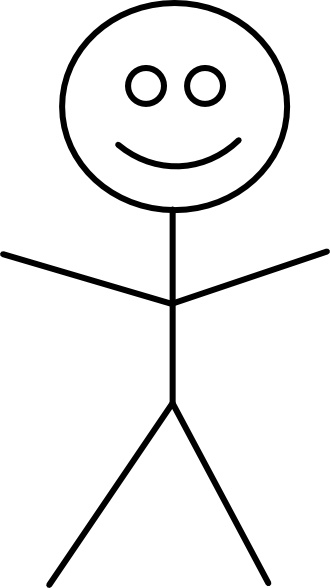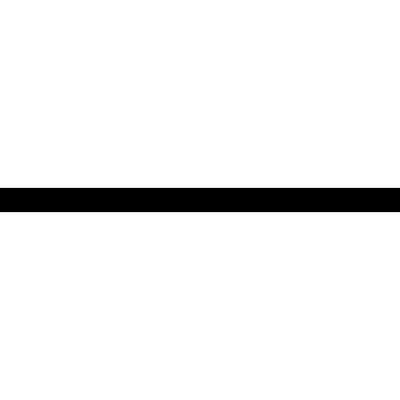The Composite Pattern
Let’s Make a Stick Figure

In the image above you see a fully formed stick figure. The fully formed intended picture is really made up of individual pieces but what we see is the elephant, so to speak.
Let’s Rip a Stick Figure to Pieces
Let’s imagine we had to make the stick figure in code. We could write code to draw a stick figure but that seems a little obnoxious and painfully complex; imagine how long the function that draws a whole stick figure might need to be. Plus if we were to write such a function, it would seem to be quite hard to extend in a meaningful way and we’d probably end up appending more and more lines onto the stick figure drawing code block. The issue is that a stick figure is not a trivial shape… But it is made of trivial shapes…
Let’s count the shapes…
Stick Figure:
- 5 Straight Lines: The Body, Left Arm, Right Arm, Left Leg, and Right Leg.

- 3 Circles: The head, Left Eye, and Right Eye.

- 1 Curved Line: The mouth
class Shape
def draw
# some kind of vector drawing
...
end
end
class Circle < Shape
...
end
class StraightLine < Shape
...
end
class CurvedLine < Shape
...
end
Okay so we’ve demonstrated that a stick figure can be broken into it’s components and simplified. But there does still need to be a stick figure at the end right?
The Composite
Just like a beautiful painting needs a sturdy canvas we need some kind of object that can hold and compose the pieces of our shapes… This object is kind of a shape itself, and that is how we’ll view it when implementing the composite pattern.
class StickFigure < Shape
delegate :draw, to: :shape
def initialize(shapes)
@shapes = shapes
end
def add(shape)
@shapes << shape
end
end
What this pattern enables us with is the ability to treat what could have been a one-to-many relationship (StickFigure to Shapes), as a one-to-one relationship (StickFigure to Shape).
:)-><